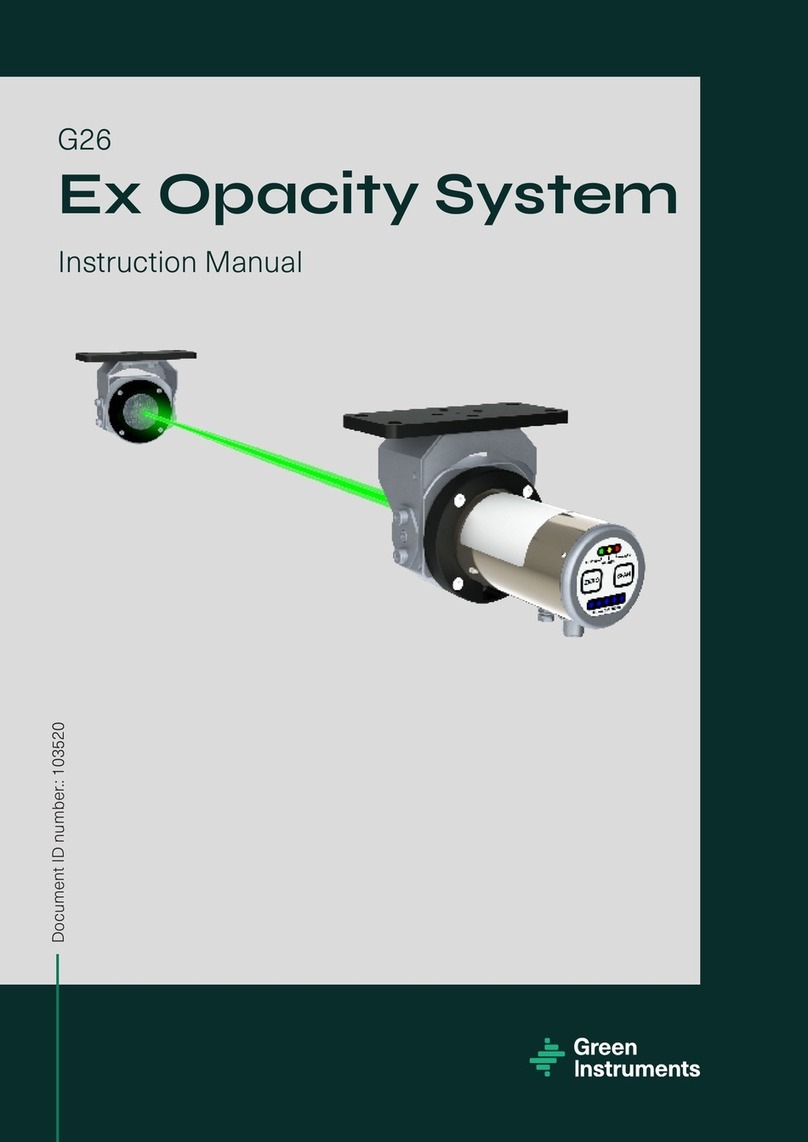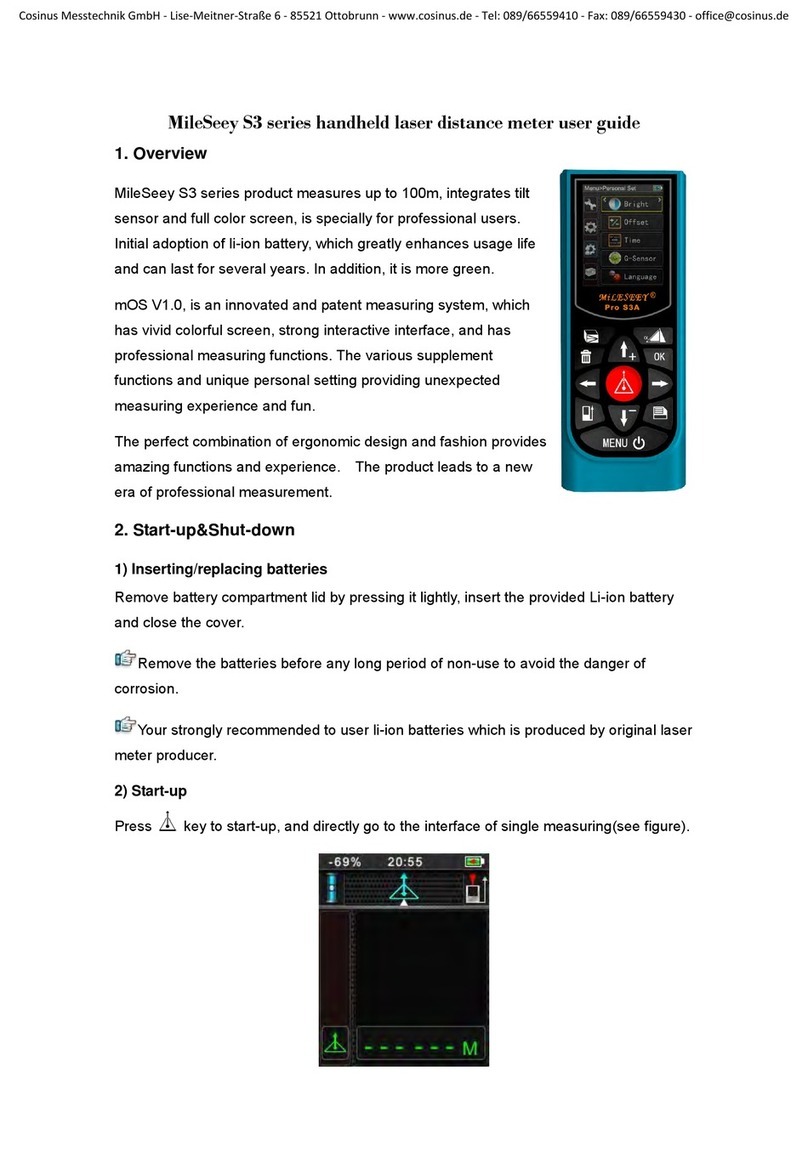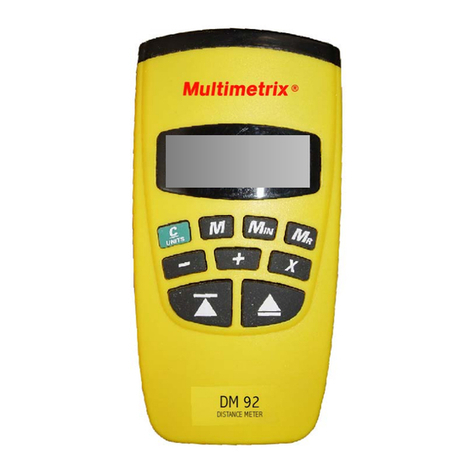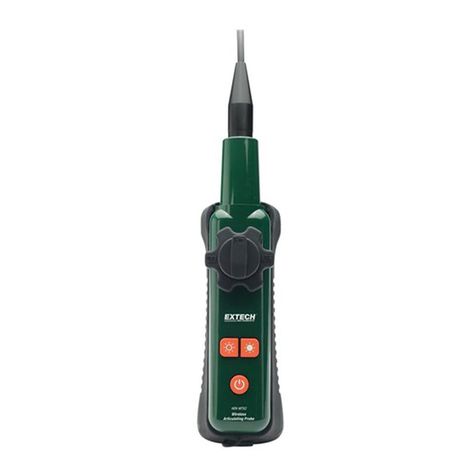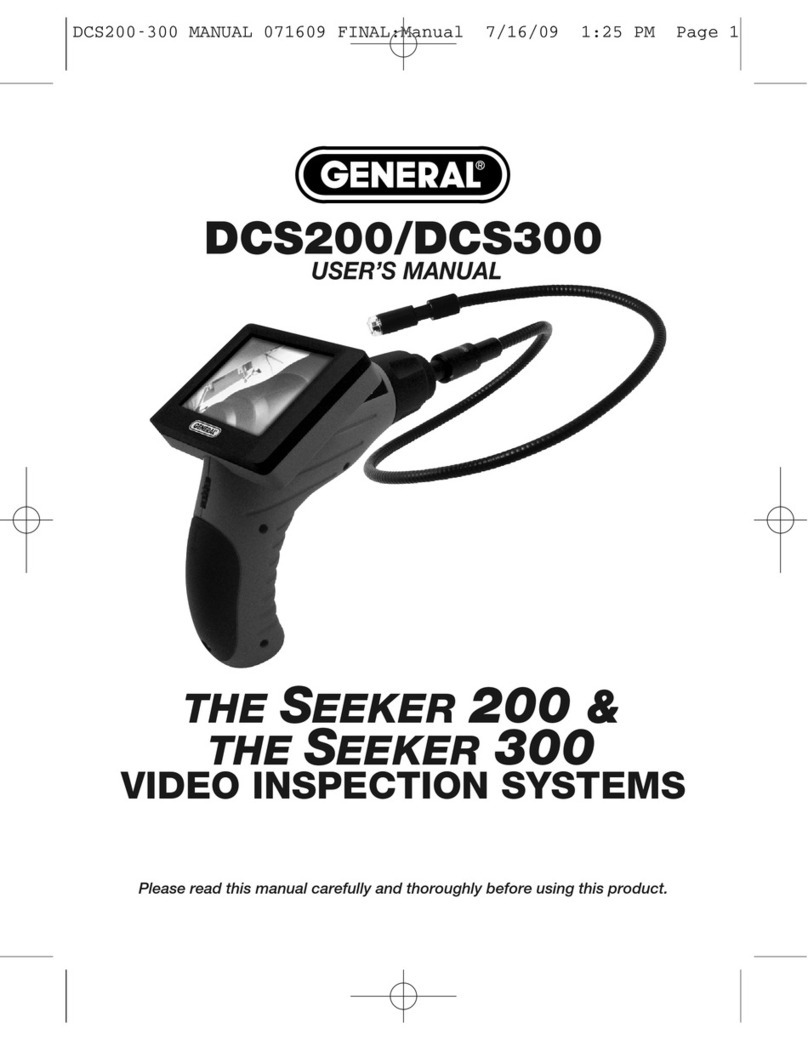GREEN INSTRUMENTS G36 User manual

G36
Oxygen Analyzer Manual
Document ID number.: 01245

Program Menu Structure
2
<
+/--
<
+/--
<
Figure 1-1: Program Menu Structure of the G36 Oxygen Analyzer

G36Oxygen Analyzer
Version 2.11 - March 2022 3
Content
1INTRODUCTION 5
1.1 ABOUT THIS MANUAL 5
1.2 INQUIRIES AND FEEDBACK 6
1.3 ABOUT THE ANALYZER 6
2SPECIFICATIONS 8
3SAFETY ASPECTS 9
4CONTROL AT DELIVERY 11
5INSTALLATION &CONNECTIONS 12
5.1 WHERE TO INSTALL THE ANALYZER 12
5.2 ELECTRICAL CONNECTION 12
5.2.1 Power Supply 13
5.2.2 Sensor Connections - SEN 13
5.2.3 Relay Outputs –D-OUT 14
5.2.4 Input Connections –INPUT 16
5.2.5 Analog Output Connections –A-OUT 16
5.2.6 SD Card 16
5.2.7 Other Connections 18
6MENU STRUCTURE 19
6.1 MAIN MENU 19
6.2 GRAPH MENU 20
6.3 INFORMATION MENU 22
6.4 CALIBRATION MENU 22
6.5 TOOLS MENU 23
6.6 NAVIGATING THE MENU STRUCTURE 25
7CONFIGURATION &COMMISSIONING 26
7.1 SETTING OF BASIC DISPLAY PARAMETERS 26
7.2 SETTING OF ALARMS 27
7.3 SETTING OF ANALOG INPUTS 28
7.4 SETTING OF ANALOG OUTPUTS 29
7.4.1 Analog Output 1 29
7.4.2 Analog Output 2 31
7.5 BACK-FLUSHING &AUTO CALIBRATION 31
7.6 LOADING DEFAULT SETTINGS &FACTORY SETTINGS 33
7.7 COMMISSIONING OF THE ANALYZER 33
8CALIBRATION 34
8.1 CALIBRATION WITH KNOWN OXYGEN GASES 34
8.2 ARTIFICIAL CALIBRATION OF OXYGEN SIGNAL 36

Content
4
9ROUTINE MAINTENANCE 37
9.1 ANALYZER 37
9.2 CALIBRATION 37
9.3 SENSOR 37
9.4 GAS CONNECTION 38
10TROUBLESHOOTING 39
11SPARE PARTS 41
12APPENDIX 43
12.1 SETTING OF ANALOG INPUTS 43
TABLE OF FIGURES
FIGURE 1-1: PROGRAM MENU STRUCTURE OF THE G36 OXYGEN ANALYZER 2
FIGURE 1-1: SIMPLIFIED SCHEMATIC OF THE ZIRCONIA CELL 7
FIGURE 5-1:TERMINALS PC-BOARD -100 -230 VAC 14
FIGURE 6-1:THE G36 MAIN MENUAND FOUR FUNCTIONAL MENUS 19
FIGURE 6-2: HISTORY &SETTINGS 21
FIGURE 6-3: NAVIGATING THE MENU STRUCTURE 25
FIGURE 7-1: BASIC DISPLAY SETTINGS 26
FIGURE 7-2: SETTINGS OF ALARM LIMITS 27
FIGURE 7-3: SETTINGS OF ANALOG OUTPUT 1 29
FIGURE 7-4: SETTING OF BACK-FLUSHING 32
FIGURE 8-1: CALIBRATION MENU STRUCTURE &QUICK GUIDE 35
FIGURE 12-1: MAIN MENU IF BOTH ANALOG INPUTS ARE AGREED TO BE USED 43

G36Oxygen Analyzer
Version 2.11 - March 2022 5
1Introduction
1.1 About this Manual
This manual contains data and instructions for the installation, operation, and mainte-
nance of the G36Oxygen Analyzer.
The instructions have been made in general terms and do not take into consideration a
specific installation. The instructions & figures have been made in general terms and do
not take into consideration specific installations. The figures used in the manual are only
for general illustration purposes. As such, the instruction manual is designed only for the
G36 Oxygen Analyzer.
The instructions for the installation, operation, and maintenance of the complete analyz-
ing system including sampling board designed for the G36 Oxygen Analyzer by Green
Instruments A/S are provided in a separate manual.
The manual does not describe all possible situations but only the most common and
known situations and cannot replace the necessary education of the personnel. Should
situations not described in the manual occur, which cannot be solved in accordance with
normal known practice and good workmanship, the operator should contact Green In-
struments A/S for instructions.
Attention
Before operation, read all instructions and warnings within this manual and
associated documentation. Improper use may cause personal injury and/or damage
of equipment and may void the warranty. Green Instruments A/S disclaims any
responsibility for damage and/or injury caused by improper installation, use or
maintenance of the equipment
Green Instruments A/S reserves the right to minor alterations and improvements owing to
developments without being obliged to enter the corresponding changes in this manual.
Green Instruments A/S reserves the copyright of the manual. Without prior written per-
mission of Green Instruments A/S, the manual may not be copied and given to unauthor-
ized people.

Introduction
6
1.2 Inquiries and Feedback
All claims and inquiries for spare parts shall be addressed to Green Instruments A/S or
our distributors. In all correspondence, or when ordering spare parts, please carefully
state the equipment type and serial number, which can be found on the label on the
equipment.
Green Instruments A/S appreciates all feedback and suggestions for improvement. If any
questions appear or any discrepancies are found in this manual, kindly contact Green
Instruments:
Green InstrumentsA/S
Erhvervsparken 29
DK-9700 Brønderslev, Denmark
Phone: +45 9645 4500
Fax: +45 9645 4501
Web: www.greeninstruments.com
1.3 About the Analyzer
The G36 Oxygen Analyzer continuously measures the content of oxygen with concentra-
tions up to 21.0%. The G36 Oxygen Analyzer can be used to measure the content of oxy-
gen in N2or CO2based inert gas, in stack gas, or in connection with exhaust gas recircu-
lation (EGR).
The G36 Oxygen Analyzer uses a zirconia sensor. The zirconium dioxide sensors have
long been established as industry standards. The G36 uses a new type of zirconia sensor,
which can be used in a wide range of applications.

G36Oxygen Analyzer
Version 2.11 - March 2022 7
The most important element
of the sensor is the zirconia
cell. At high temperatures,
the oxygen ions can diffuse
through the zirconium diox-
ide membrane. When the
membrane is exposed to an
environment that contains
different amounts of oxygen
(e.g. the sensor internal refer-
ence gas on one side and
sample gas on the other), na-
ture seeks to balance itself,
and the transportation of ions
through the membrane will
generate an electrical charge.
Sample Gas
Reference Gas
Zirconium Dioxide Membrane
O2–
O2–
ZrO2
O2
O2
O2
O2
O2
O2
O2
O2
O2
V
e–e–
Figure 1-1: Simplified schematic of the zirconia cell
This charge depends on the amount of the passing oxygen ions i.e. the difference between
the oxygen levels in the sample gas and the reference gas. This voltage will be detected
and converted into a signal that is proportional to the oxygen concentration in the sample
gas. The signal will be processed in the analyzer and the oxygen concentration of the
sample gas will be shown in the display.
The G36 Oxygen Analyzer has CE and MED markings as well as DNV, Bureau Veritas,
and Lloyds Register Type Approvals.
Download all product certificates at https://greeninstruments.com/

Analyzer Specifications
8
2Specifications
G36 Analyzer
Analyzer Types
•Inert Gas O2Analyzer
•Stack Gas O2Analyzer
•EGR-O2Analyzer
Monitors O2content in inert gas (N2or CO2based)
Monitors O2content in stack gas
Monitors O2content in exhaust gas recirculation
Sensor types
Zirconia sensor type SEN1 or SEN9
Measurement range
0.0%…21.0% O2
Ambient temperature
–15°C …55°C
Ambient humidity
Up to 100% at all relevant temperatures
Power supply
100…230 VAC –50/60Hz
Power consumption
Max. 40 VA per analyzer –recommended fuse: 4 AT
Sample flow
0.2…8.0 l/m
Sample temperature
SEN1: ≤ 250oC; SEN9: ≤ 650oC
Sample pressure
SEN1: max.1 bar; SEN9: max. 4 bar
Digital display
Touch screen 71 x 39 mm
Output signals
Active 4…20 mA – range selectable –default 0.0…25.0%
Load output (max.)
600 ohm/24 VDC
Relays
4 relays, volt free, 24 V AC/DC, 5 A
Alarm functions
Low or High O2level –set points freely configurable
High-High O2level –set point freely configurable
System failure alarm
Response time*
90% of measuring scale in less than 45 sec. with sample flow
rate of 0.8 l/m, sample line of 1 m
Repeatability
+/–0.1% of the measuring range
Linearity/Accuracy
+/–0.5% of the measuring range
Drift (one month)
+/–0.1% of the measuring range
Dimensions
17 × 20 × 9 cm (H×W×D)
Weight (analyzer only)
2.5 kg without packaging
Analyzer casing
Aluminum casing IP67
Optional: O2 analyzer with pressure compensation module, BV’s product certificate.
Specifications are subject to changes without notice.
* Response time depends on the sample flow rate and the length of the sample line.

G36Oxygen Analyzer
Version 2.11 - March 2022 9
3Safety Aspects
Attention
•Follow the operating instructions!
•Make sure that all power and signal cables are connected correctly before
operating the analyzer.
•The sensor and sensor housing are hot and can cause severe burning of
personnel if not handled with care.
•The G36 Oxygen Analyzer is only suitable for installation in a safe, non-
hazardous area and not suitable for use with flammable sample gases.
•It should be pointed out that installation and operation of the G36 Oxygen
Analyzer and associated equipment must be carried out by skilled, trained,
and certified personnel, and that Green Instruments A/S does not take any
responsibility for the operation of the analyzer and associated equipment
whatsoever.
•The analyzer must only be applied as described in this instruction manual. If
the analyzer is used in a manner not specified by Green Instruments, the
protection provided by the analyzer may be impaired.
•Successful and safe operation of this equipment depends on proper handling,
installation, operation, and maintenance.
Hazardous voltage!
Always disconnect power before installing or servicing the analyzer. Ignoring this warn-
ing can result in severe personal injury or material damage. Read the instruction carefully
to ensure correct connection of all power and signal leads. Make sure that the correct
voltage is connected to the analyzer (see rating marked on the analyzer name plate).
Circuit breaker!
The installation must include a way to switch off the electrical power by a clearly marked
switch or circuit breaker external to the analyzer. The external switch or circuit breaker
shall be placed in close proximity to the analyzer and within easy reach of the operator.
Overload protection!
For compliance with the IEC 61010-1 (2003) safety requirements, the installation must
include a means of overcurrent protection to provide protection against excessive energy
being drawn from the power supply system in case of a fault in the analyzer.

Safety Aspects
10
Protective earth!
The analyzer must be connected to protective earth.
Installation and fault finding!
Electrical installation and fault finding on the analyzer should only be undertaken by a
suitably trained and qualified engineer.
EMC!
For compliance with the EMC product standard IEC 60533 (1999), the connection cables
for the main supply, relays, interface, and analog output signals should be shielded or
provided with equivalent protection.
Special precautions have to be taken in connection to "long" signals or control lines of
more than 30 meter.
Sensor!
The sensor must not be exposed to strong mechanical shocks. Otherwise the sensor ele-
ment may crack without visible damage.
The sensor must be connected to the analyzer before the analyzer is powered up (risk of
damage). As soon as the analyzer is under voltage, the connection to the sensor must not
be interrupted. Therefore, please disconnect the power when you need to connect or dis-
connect the sensor.
Connections!
All electrical connections and power supplies are placed inside the analyzer. To gain ac-
cess, unbolt the top cover of the analyzer using a standard 4-6 mm screwdriver.
Poisonous gases!
Both sensor types, SEN1 and SEN9, used for the G36 Oxygen Analyzer are not suitable
for installation in areas with a high concentration of methane (CH4).
Besides, a reduced life time can occur if the sensor is subjected to lead, phosphor, silicon,
halogens or high concentration of sulfur.
Recycling!
Please do not dispose the G36 Oxygen Analyzer with regular refuse. Disposal should be in
accordance with the requirements of the current statutory regulations.
Symbol identification
Caution, risk of danger
Caution, hot surface
Caution, risk of electrical shock
Protective earth
The CE mark proves the compliance of the instrument with the requirements of
the relevant EU directives

G36Oxygen Analyzer
Version 2.11 - March 2022 11
4Control at Delivery
When you receive the G36a Oxygen Analyzer, please inspect, and confirm that the re-
ceived scope of supply is in accordance with the packing list and that nothing is dam-
aged.Any discrepancy should be reported to the supplier immediately.
If any of the received parts are damaged, the shipping company should be informed, and
new parts should be made available before completing the installation.

Installation & Connections
12
5Installation & Connections
Read this chapter in its entirety before installing the analyzer.
5.1 Where to Install the Analyzer
Satisfactory operation, faultless functions, and minimal maintenance of the G36 are
achieved by paying attention to the following notes:
•The equipment should be installed in a clean area away from dust, oil mist, and mois-
ture. The analyzer should be installed at viewing level in an area with good access for
operating and servicing. The location and installation of the analyzer must be chosen,
so that the ambient temperature is below 55C at any time.
•The gasses supplied to the sensor must have a constant flow and pressure. This flow
and pressure control is achieved with the sampling system that is typically delivered
with the analyzer. Please consult the respective manual or contact Green Instruments
A/S.
•The sensor house for both SEN1 and SEN9 have 1/8’’ BPS connection. Sampling tube
and vent line should be arranged in the way which ensures the flow and pressure at
sensor house constant and within the required range.
•The sensor can be installed up to 6 m from the analyzer. The sensor and the sensor
house shall be mounted horizontally (sensor pointing sideways) or downwards (sensor
pointing down) to prevent the water condensation collecting at the sensor house.
5.2 Electrical Connection
Note
Each analyzer will be configured at the factory to be either:
•An Inert Gas Oxygen Analyzer for monitoring O2 in inert gas
•A Stack Gas Oxygen Analyzer for monitoring O2 in stack gas
•An EGR Oxygen Analyzer for monitoring O2 in the EGR system
For the default configuration and connection of each analyzer, please see the
Testing & Configuration Sheet attached to each analyzer.

G36Oxygen Analyzer
Version 2.11 - March 2022 13
The electrical connections are dependent on the actual system configuration. The termi-
nals are all located on the PC-Board. Only the functions to be used shall be connected.
Please choose the cables that fulfill the following requirements:
Wire size for power supply: 1 x 1.5 mm2 w/screen
Wire size for analog in/output connections: 1 x 1.5 mm2 w/screen
Wire size for digital in/output connections: 1 x 1.5 mm2 w/screen
5.2.1 Power Supply
The power supply terminal is located at the bottom right corner of the electrical board
and is marked power supply rating (100…230 VAC).
Before connecting the power supply, please make sure that the power supply rating for
the analyzer corresponds with the power supply available.
5.2.2 Sensor Connections - SEN
The analyzer is equipped with either a SEN1 or a SEN9 sensor (see the Testing & Con-
figuration Sheet). The sensor is connected to the terminal SEN in the analyzer.
Attention
Each analyzer is delivered with cable connections that are fit for use for either
SEN1 or SEN9. See chapter 11 for the spare parts list.
The sensors are connected to the terminal SEN as follows:
Terminal SEN
Pins at SEN1
Pins at SEN9’s connection
Terminal 1 (Sensor electrode)
3
1(black)
Terminal 2 (Sensor electrode)
2
2 (yellow)
Terminal 3 (Sensor electrode)
1
3 (red)
Terminal 4 (No connection)
Terminal 5 (Sensor heating)
4
4 (grey)
Terminal 6 (Ground)
5
5 (white)
The cable between sensor and the analyzer can be delivered up to 6 m in length.

Installation & Connections
14
SD-CARD RS-232
FUSE 3
2AT/250 V
FUSE 2
2AT/250 V
FUSE 1
2AT/250 V
CAN 100–230 VAC
1.+24VDC
2.1 NC
3.1 COM
4.1 NO
5.2 NC
6.2 COM
7.2 NO
8.3 NC
9.3 COM
10.3 NO
11.4 NC
12.4 COM
13.4 NO
14 GND
L N
6. DIGITAL IN 3
7. DIGITAL IN 4
8. GND
3. + 24 VDC
4. DIGITAL IN 1
5. DIGITAL IN 2
4. A-OUT 2 +
5. A-OUT 2 –
1. A-OUT 1 +
2. A-OUT 1 –
3. NOT USED
6. GND
5. Oxygen
HEAT
GREEN Instruments A/S
www.Greeninstruments.com
4. NOT
USED
3. Oxygen
2. Oxygen
1. Oxygen
1. ANALOG IN 1
2. ANALOG IN 2
D-OUTSEN
INPUT
A-OUT
ETHERNET
(OPTIONAL)
PE
Figure 5-1: Terminals PC-Board - 100 - 230 VAC
5.2.3 Relay Outputs –D-OUT
The analyzer is arranged with four relay outputs connected to D-OUT with 14 terminals.
It is important to note that the configuration of the analyzer might deviate from the con-
figurations listed below. Please see the Testing & Configuration Sheet that is attached to
each analyzer.
The default relay functions, and connections of the Inert Gas Oxygen Analyzer are as fol-
lows:
Relay No.
Relay function
Terminal Connections
Internal power supply
+ 24 VDC
Terminal 1
Relay 1
Alarm High/Low O2
level
Terminals 2.1-3.1-4.1
(NC-COM-NO)
Inverted
Normally energized
Relay 2
Alarm High High O2
level
Terminals 5.2-6.2-7.2
(NC-COM-NO)
Inverted
Normally energized
Relay 3
System failure alarm
Terminals 8.3-9.3-10.3
(NC-COM-NO)
Inverted
Normally energized
Relay 4
Calibration Span Gas
Terminals 11.4-12.4-13.4
(NC-COM-NO)
Normally
de-energized
Internal power supply
–ground
Terminal 14

G36Oxygen Analyzer
Version 2.11 - March 2022 15
For the Stack Gas Oxygen Analyzer and the EGR Oxygen Analyzer relay functions and
connections are as follows:
Relay No.
Relay function
Terminal Connections
Internal power supply
+ 24 VDC
Terminal 1
Relay 1
Alarm High/Low/
High-High O2 level
Terminals 2.1-3.1-4.1
(NC-COM-NO)
Inverted
Normally energized
Relay 2
System failure alarm
Terminals 5.2-6.2-7.2
(NC-COM-NO)
Inverted
Normally energized
Relay 3
Auto Back-flushing
Terminals 8.3-9.3-10.3
(NC-COM-NO)
Normally
de-energized
Relay 4
Auto-Calibration
Terminals 11.4-12.4-13.4
(NC-COM-NO)
Normally
de-energized
Internal power supply
–ground
Terminal 14
Alarms
The values for three O2 level alarms (Low, High, and High-High) can be set following
instruction in section 7.2.
The system failure alarm includes a sensor alarm and alarm for open loop of the analog
outputs. If the G36 Oxygen Analyzer is configured with a digital flow switch, the system
failure alarm will also include the flow alarm.
Normally energized
Normally energized means that the relay is energized in the alarm free condition during
operation. The relay will be de-energized when there is an alarm or when the supply volt-
age disappears from the analyzer. Thus, the normally energized relays will give a fault
signal in the event of failure of power to the analyzer.
Normally de-energized
Normally de-energized means that the relay is de-energized in the normal operating con-
dition. For the Inert Gas Oxygen Analyzer, relay 4 (normally de-energized) will be ener-
gized in span calibration condition. For the Stack Gas Oxygen Analyzer or the EGR Ox-
ygen Analyzer, relay 3 or 4 respectively will be energized when the analyzer is back-
flushing or auto calibrating.

Installation & Connections
16
5.2.4 Input Connections –INPUT
The input connections (INPUT) are placed right below the sensor connections SEN. The
terminal is arranged with 8 poles for 2 analog inputs and 4 digital inputs. The configura-
tion is as follows:
Terminals 1 & 3:
Ai01 –Analog Input 1 for connection of a passive 4-20 mA signal*
Terminals 1 & 8:
Ai01 –Analog Input 1 for connection of an active 4-20 mA signal**
Terminals 2 & 3:
Ai02 –Analog Input 2 for connection of a passive 4-20 mA signal*
Terminals 2 & 8:
Ai02 –Analog Input 2 for connection of an active 4-20 mA signal**
Terminals 4 & 8:
Di00 –Digital Input 1 for connection of an NPN input
Terminals 5 & 8:
Di01 –Digital Input 2 for connection of an NPN input
Terminals 6 & 8:
Di02 –Digital Input 3 for connection of an NPN input
Terminals 7 & 8:
Di03 –Digital Input 4 for connection of an NPN input
* Passive input signal means signal voltage from the G36 analyzer.
**Active input signal means signal voltage from external source.
As an option, digital input 1 can be set up for artificial calibration, and/or digital input 2
can be set up for back-flushing.
For setting the analog inputs please see appendix 12.1.
5.2.5 Analog Output Connections –A-OUT
There are two active 4…20 mA output signals*** for load up to 600 ohm. The configura-
tion is as follows:
Terminals 1 & 2
=
Analog Output 1 for the remote indication of oxygen level
Terminal 3
=
No connection
Terminals 4 & 5
=
Analog Output 2 (optional)
*** Active output signal means signal voltage from the G36analyzer.
For setting of analog outputs please see section 0.
5.2.6 SD Card
The SD card is used for storage of the historical trend of O2and the logbook. The SD
card can also be used to load a new software version to the analyzer.
Data log
The internal memory of the analyzer measures and saves six values every minute. How-
ever, the internal memory can only store one hour of logging, which is equal to 360 log
values. If there is no SD card installed the new log values will supersede the old log val-
ues. This means there will be no historical trend curve and alarm logs as well.

G36Oxygen Analyzer
Version 2.11 - March 2022 17
However, if you install an SD card in the analyzer, the internal memory will be saved on
the SD card every minute. If the analyzer alarm and logbook functions are on, the alarms
will also be logged on the SD card.
There are two log files in the SD card, a log file for O2values –g1x.log and a log file
for alarms –g1x.alm.
If you want to read the log files directly from the SD card using a Windows-operated
computer, you have to use Notepad. Do not open the log files in WordPad. WordPad will
damage the format of the log files, and the analyzer will be unable to log any more data
on the SD card.
The best way to read the log files is to copy them to the local disk of your computer and
then open them from your computer. This way, you can use any program that can open a
txt-file including Notepad, WordPad, MS Word and MS Excel.
The data in the log file –g1x.log includes five columns, i.e.:
YYYY-MM-DD
HH:MM:SS
Datalog of A-OUT 1
(O2*100)
Datalog of A-OUT 2
Unix time
2009-11-12
13:01:54
2089
0000
1258027314
The SD card shall be replaced after two years due to the limited capacity.
Software and default configuration uploading
The folder bin at the SD card includes two files: G1.bin and g1parm.bin.G1.bin is the
software file and g1parm.bin is the default configuration file.
If Green Instruments delivers a new software version with two files named G1.bin and
g1parm.bin the following steps will guide you through the installation:
•Replace the old files at the SD card with the new files G1.bin and g1parm.bin that
you have received.
•Set the SD card back in the analyzer. Then, restart the analyzer. Now the analyzer will
automatically check the SD card to see if there is a new software version. If yes, the
new software will automatically be loaded to the internal memory of the analyzer.
•After uploading the new software version, reload our default settings by choosing
Load default settings in Tools setting\Service (password level 2)\Load default settings.
•After uploading the new software version, you have to reset the analyzer following the
instructions in chapter 7.

Installation & Connections
18
5.2.7 Other Connections
The Ethernet, RS-232, and CAN connections are not in use by default.

G36Oxygen Analyzer
Version 2.11 - March 2022 19
6Menu structure
Please see Figure 1-1
for the Program Menu Structure
6.1 Main Menu
The analyzer is designed with a touch screen. The Main Menu displays the current oxy-
gen value in percent, and to the right four function keys are displayed. The function keys
are connected to four different functional menus: Graph, Information, Calibration and
Tools.
<
Figure 6-1: The G36 main menu and four functional menus
If the alarm function is on and an alarm is triggered, the alarm message will be displayed
at the bottom left corner of the screen.

Menu Structure
20
6.2 Graph Menu
Pressing changes the display into a graphical mode in which a trend curve of the log
values (Y-axis) is shown on a time scale (X-axis).
The actual oxygen value in percent is displayed in the upper right corner of the graph
screen as Current.
The trend curve displays the log values from the SD card. The trend screen has 108 dots
in the timeline. Therefore, the trend curve will show 1 log value per dot if the X timing is
set to 18 minutes (6 log values/minute x 18 minutes = 108 values). If the X timing is less
than 18 minutes, the trend curve will be shown as a dotted line.
If the X timing is 36 minutes, two values will be printed at the same X-position. Similar-
ly, if the X-timing is 180 minutes, 10 values will be printed at the same X-position with
all different Y values.
Pressing gives access to the History time menu, where you can choose to see the
trend curve in a specific historical period and change the setting for the trend curve.
Note for Stack gas oxygen analyzer
During back-flushing, the Current status is changed to bFrozen with the oxygen value
measured before the backflushing.
During auto calibration, the Current status is changed to cFrozen with the oxygen
value measured before the calibration.
History time & Graph settings
To see the trend curve in a specific historical period, it is possible to change the values in
Date & Time. If for example it is now 12:28 and you want to see the trend curve at 11:00
you have to go through the following steps:
•First, select Time and enter the historical point of time.
•Then, select Locate history point, and the screen will show to the trend curve at that
specific time.
Table of contents
Other GREEN INSTRUMENTS Analytical Instrument manuals
Popular Analytical Instrument manuals by other brands
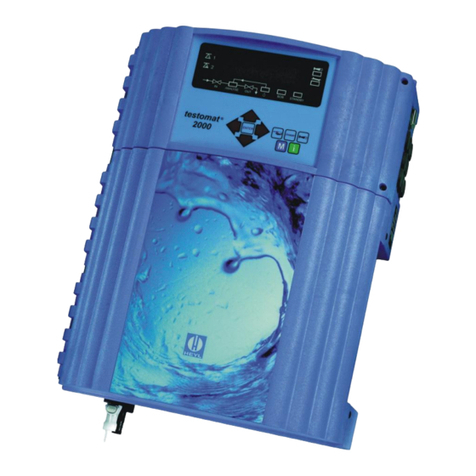
Lenntech
Lenntech Testomat 2000 operating instructions

Teledyne
Teledyne T802 Operation manual

Bühler technologies
Bühler technologies GAS 222.35 Ex1 Installation and operation instruction
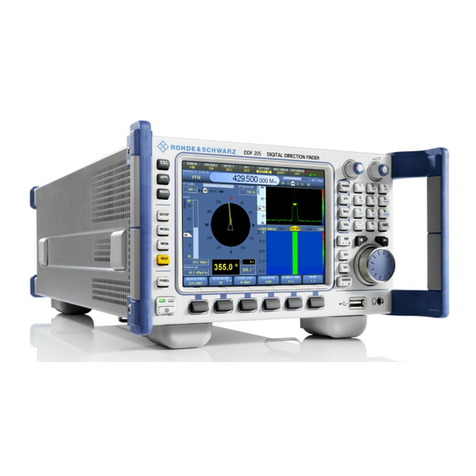
Rohde & Schwarz
Rohde & Schwarz DDF205 Getting started
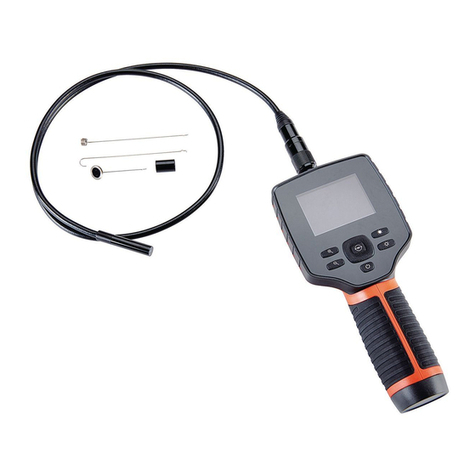
AMES
AMES 64623 Owner's manual & safety instructions
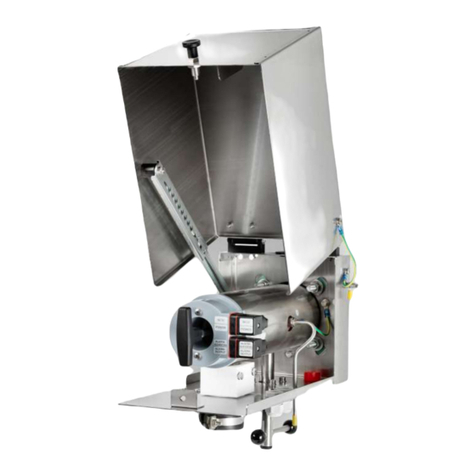
Buhler
Buhler GAS 222.21 Ex2 Installation and operation instructions
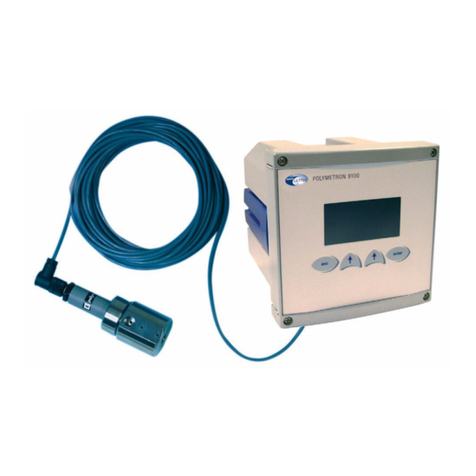
Hach Ultra
Hach Ultra POLYMETRON 9182 Operator's manual

Bosch
Bosch DLR130 Operating/safety instructions
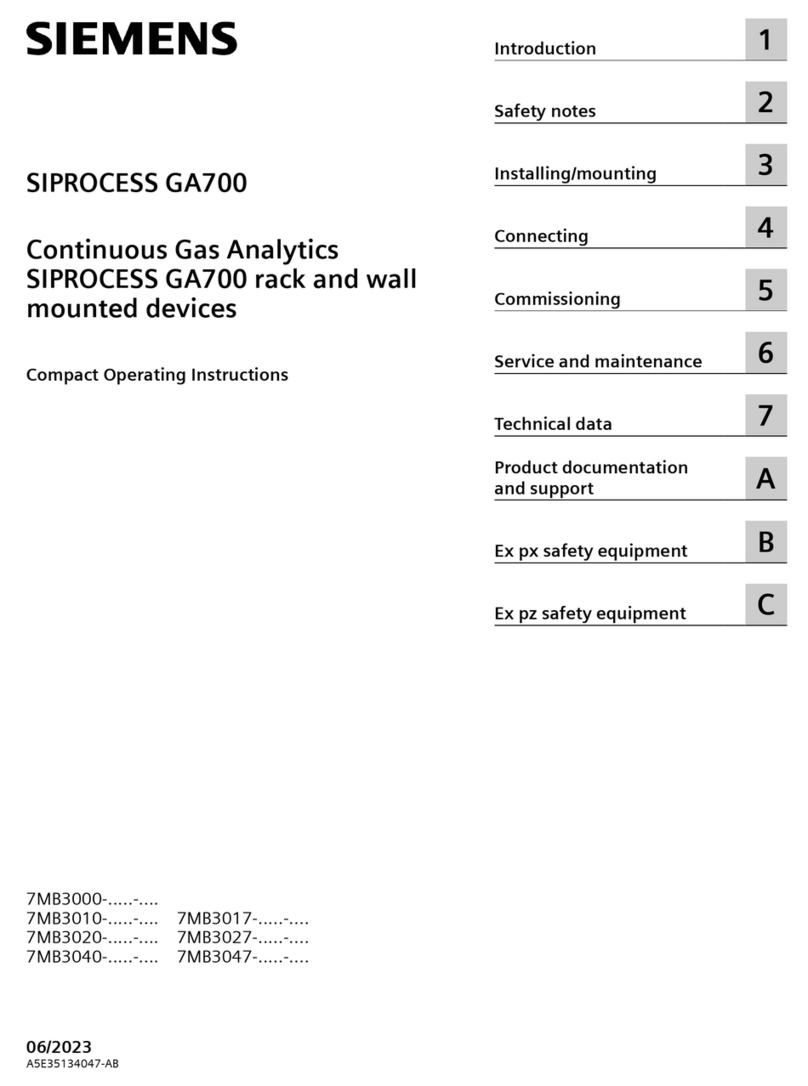
Siemens
Siemens SIPROCESS GA700 Compact operating instructions
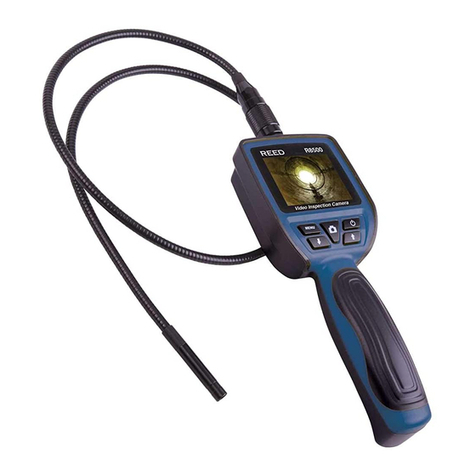
Reed Instruments
Reed Instruments R8500 instruction manual
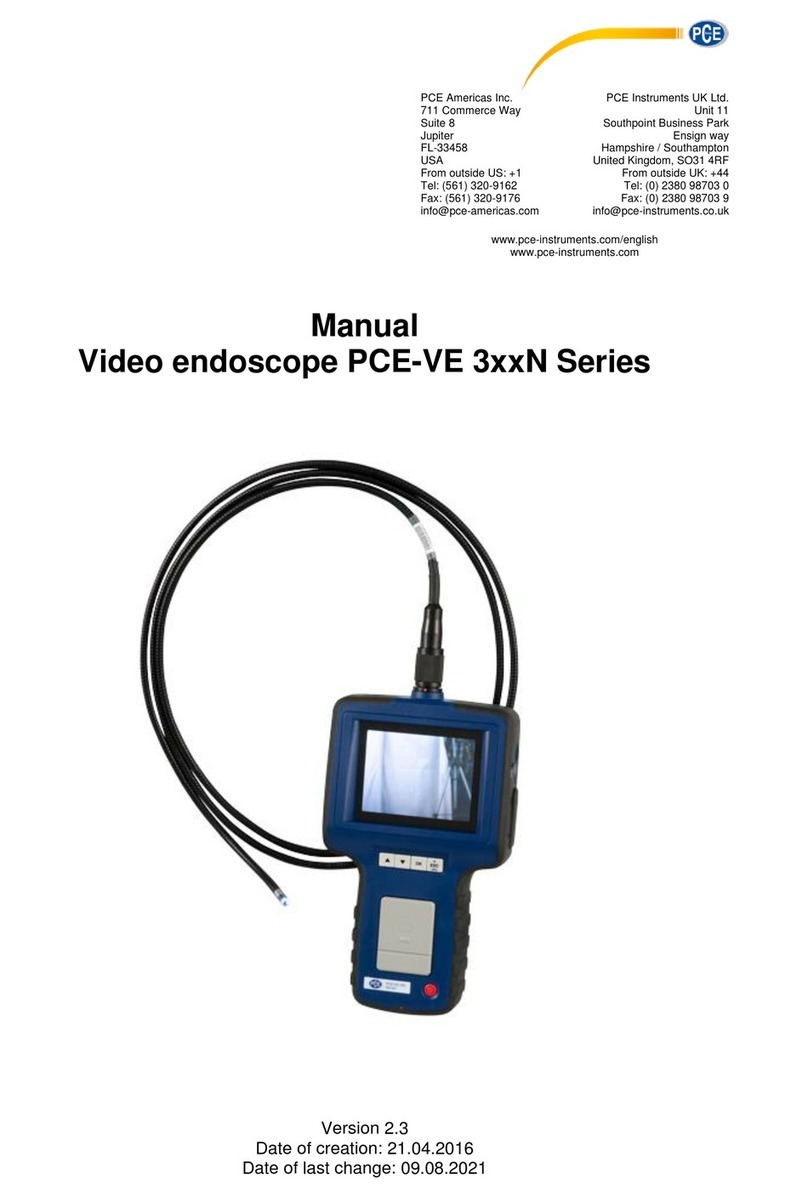
PCE Instruments
PCE Instruments PCE-VE 355N manual
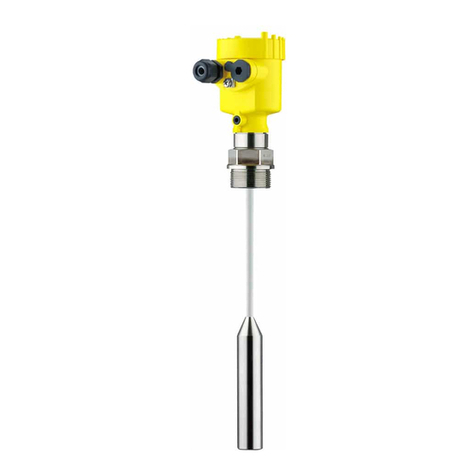
Vega
Vega VEGACAL 66 operating instructions
